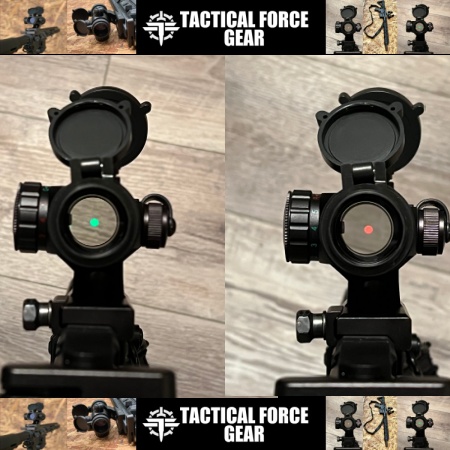Surf fishing and flyfishing are both challenging. It might be easy to assume, then, that combining the two would present the ultimate angling test. But in reality, it’s a lot less daunting than many people believe. Those who live within range of migratory striped bass on both coasts have the perfect targets for breaking the notion that attacking the surf, back bay, or jetty with a fly rod and no boat requires a miracle for success. It doesn’t. Striped bass feed very close to shore, and if you can grasp a few key concepts on what to throw and where to plant your feet, the learning curve is shorter than you think.
My friend and fellow Northeast-based writer, Mike Carr, prefers to catch all his stripers on the fly. Saying he’s passionate about the pursuit is an understatement, and though he spends time on boats, much of his energy in the fall is spent on solo foot missions. I recently had Carr on the Quick Strike podcast, and his insights, gleaned from years of trial and error, will demystify the game and put salty stripers right in your casting range whether you’re a seasoned long-rodder or ready for a new challenge.
The Outfit
It’s easier to home in on the perfect fly setup if you’re fishing on foot than it is if you’re using a boat. You might think it would be the opposite, but if you can zip all around the bay, you could end up in 30 feet of water and then five feet a few minutes later. You could encounter giant bass that want huge flies and then transition to school-sized fish. This could mean you’d want rods and lines in different weights to be most effective, but your limitations on shore make gear selection much simpler.
“If you have a 9-foot, 9-weight rod and an intermediate line, you’re never going to go wrong anywhere,” says Carr. “You can use that on the beach, in the back bay, or on the jetty. As long as you understand how to match a leader to a fly, that combination will deliver.”
Considering you’ll be using subsurface flies most of the time, an intermediate line, which sinks slowly, is ideal. From shore you’re usually fishing shallow water, so a heavier sinking line would drop too fast. But even surface patterns like poppers and Gurglers can be fished on an intermediate line by switching to an 8- to 9-foot leader so the belly created as the fly line sinks won’t pull the surface fly under. Sinking patterns, meanwhile, can be fished on a shorter leader so the sinking fly line pulls them down faster.
Though you don’t need an ultra-high-end reel for stripers, you will want one with a sealed drag. Fishing the surf and jetties means your reel will get splashed and dunked in saltwater, so it’s important that the reel’s guts remain dry. The Lamson Liquid is a great choice and very affordable for a sealed reel.
Get Control
Perhaps the most critical piece of kit for saltwater foot fly missions is a stripping basket. These come in several different configurations or you can make your own, but their function remains the same. A stripping basket is worn on a belt around your waist and as you retrieve your fly, it collects all your loose running line. Proper stripping baskets feature pegs on the bottom of the basin, which help thwart coiling and tangling. Though it can take a little practice to get comfortable stripping into the basket without even thinking about it, it’s far less frustrating than the alternative.
“Fly casting on the ocean surf is already challenging,” Carr says. “You’re dealing with wind and waves. If you don’t have a stripping basket, all the loose line piling up at your feet will get tangled fast. You’ll end up spending most of your day picking out constant tangles.”
Must-Have Flies
The last thing you want while patrolling a beach or sod bank is weighed down by too much gear. There’s simply no need to carry several fly boxes brimming with patterns because once again, the limitations of being bound to shore allow you to be minimalistic. Most of the time you’re going to be making casts that max out at about 30 feet. You’ll also be fishing shallow water and, though there are exceptions, most of the bait the fish will be chasing in your range will be small. This allows Carr to confidently approach any situation with three key flies.
“I need Clouser Minnows in various sizes, and I rarely tie them in anything other than olive-over-white or chartreuse-over-white,” he says. “I want a Deceiver style fly to mimic slightly bigger baitfish and then in the Northeast especially, you need something like a Surf Candy that mimics a sand eel.”
I personally always carry at least one popper fly as well in case a topwater blitz erupts, but rarely is the popper the pattern that makes the most plays. Even if the surface is boiling with bass, those fish will hit any of Carr’s must-haves, but watching them hit a popper is more fun.
Photo by Mike Carr.
Do Your Homework
None of your gear or flies really matter if you don’t know where to use them, but there are tricks to whittling down productive locations. What you must remember is that you can’t be a hero caster—you need to find fish within very close range. Luckily, striped bass have no aversion to feeding in very tight to inshore structures. In fact, in many cases, they gravitate to them.
As an example, despite the vastness of the ocean in front of you, stripers love to run in deep troughs very close to where the waves meet the sand. In the back bay and along jetties, they’ll herd baitfish right up against the rocks and sod banks while feeding. It’s always a smart move to target these locations at the end of the high tide and fish into the falling tide, banking on a window of feeding action within the first few hours of the drop. But identifying prime spots—those with good depth at high tide and good current flow when the tide is moving—requires a little extra effort.
“Stripers are predators of ease,” says Carr. “They don’t want to work hard for a meal, especially on the beach. But it’s up to you to know where those depth changes that create easy feeding lanes are. To get ahead of the game, you need to go look at water when you’re not fishing. Go in the summer while you’re on family vacation. Go during all different tide stages. Have a few starting locations in mind before the fall season gets going.”
Finding fish is arguably easier in the back bay, which reads more like a lake or river, but the oceanfront surf can be daunting. Birds dipping and diving can point you to the bass, but there’s a simple trick to identifying troughs. Follow a wave breaking offshore. If it rolls all the way to the beach without changing speed or diminishing, it’s traveling over bottom of a uniform depth; if it breaks, rolls, flattens out, then rebuilds closer to the beach, the flat spot lets you know it encountered a deeper trough. Find those flat spots within range of your cast and you’re one step closer to victory.
Read the full article here




